A great deal of importance was ascribed to names in Ancient Egypt. However, the word “Pharaoh” is a corruption of the word Pr-a’a (“great house”) and “Egypt” itself is based on the term “hwt-ka-ptah” (The name of Ptah’s temple in Memphis).
Although the term pharaoh was used to refer to the king, the first recorded instance of this connection is in the reign of Thuthmosis III (dynasty eighteen). The terms Nsw (usually translated as “king” but strictly it means “king of Upper Egypt“), Ity (“sovereign”), and Heqa (“ruler”) were most commonly used. The king was sometimes introduced as hm-k (“your majesty”) or hm-f (“his majesty”).
Horus name
The oldest known part of the royal titulary is the Horus-name (sometimes also called the banner-name or the Ka-name). It asserts that the king is the earthly embodiment of the god Horus, patron of the Egyptian kings, and is generally inscribed within a Serekh (a rectangular form representing the palace wall). Horus in the form of a falcon perches on top of the Serekh.
During the second dynasty, Seth-Peribsen had a Seth animal on top of his Serekh prompting some to suggest a factional war between the followers of Horus (Upper Egypt) and the followers of Seth (Lower Egypt). The next ruler, Khasekhemwy, had both Horus and Seth on his Serekh, but all of his successors left Seth off their Serekhs.
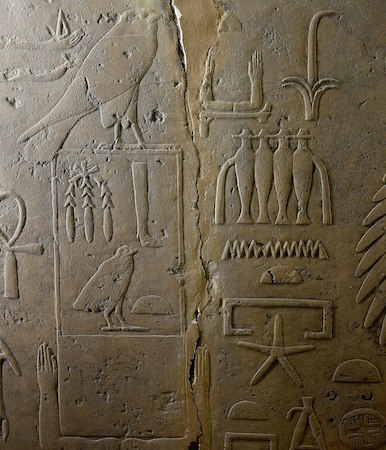
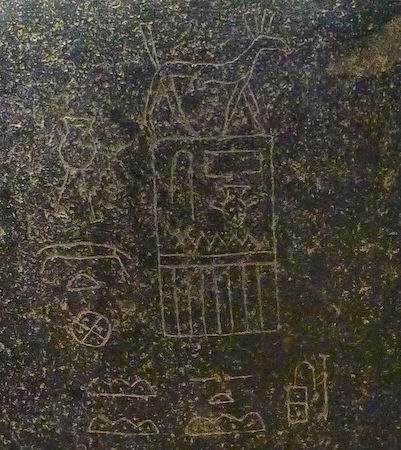
During the Early Dynastic Period, the falcon of Horus was part of the name of the king (Aha was known as Horus-Aha, “Horus who fights” or “fighting hawk”), but it soon became symbolic of kingship in itself. Until the early Old Kingdom, it was the king’s official name. After this time, the nomen and prenomen became more popular for official texts. However, the title was still used, and by the New Kingdom, elaborate designs showed Horus is wearing the double crown and is accompanied by the sun and a uraeus.
Nebti name
The Nebti-name carries with it the epithet “He of the two ladies” and refers to two goddesses; the vulture-goddess Nekhbet of Upper Egypt and the cobra-goddess Wadjet (or Uto) of Lower Egypt. Thus, the Nebti confirms that the Pharaoh is king of Upper and Lower Egypt and embodies the duality often found in ancient Egyptian mythology. Den (dynasty one) was the first Pharaoh known to us the Nebti, and it is suggested that it was adopted following reform to the bureaucratic structure of the two lands.
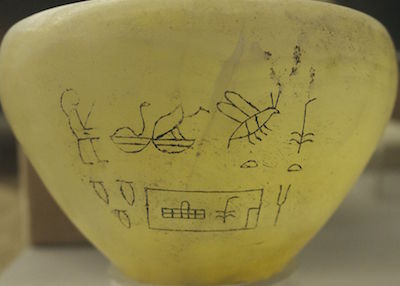
Golden Horus name
The golden Horus name represents the falcon god Horus perched on a symbol that usually represents “gold”. However, its meaning is hotly disputed. The Greek equivalent of the title (on the Rosetta Stone) translates as “superior to (his) foes”, and so it is suggested that the title indicates that Horus has been victorious over Set, “the Ombite” (Ombos was called “Nubet” in Egyptian and was written using the glyph for gold to represent the phonetic elements “Nub”).
This explanation seems to have originated from Greek sources, and it is more likely that the sign did to relate gold, which represented eternity. It may have simply expressed the Pharaoh’s wish to be an “eternal Horus“, and have been an epithet rather than a separate name (due to the similarity with the Nebti-name).
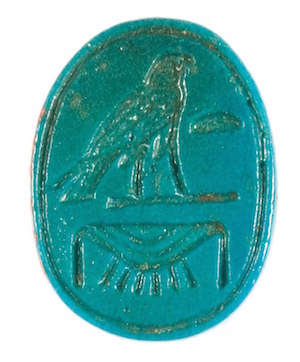
Prenomen
The prenomen or throne name became the most important title, as it was only granted to the king on his coronation. It was always inscribed within a cartouche. Strictly translated, it reads as Nesw-bitu (“He of the sedge and the bee”), but it indicates that the Pharaoh is king of Upper (sedge) and Lower (bee) Egypt.
Sometimes the Nsw-bity was replaced by the phrase Nb-twy (“lord of the two lands”). Den also introduced this name (at least, his is the earliest recorded version of it), but it was not used much until the end of the third dynasty. Eventually, it replaced the Horus-name as most important official royal name.
The prenomen almost always contained the name of the sun god, Re (after the eleventh dynasty they all referred to Re). For example, the twelfth dynasty Pharaoh Amenemhet I has the throne name Sehet-ib-Re (“satisfied is the heart of Ra”) while the twentieth dynasty pharaoh used the throne name Heqa-Maat-Re (“Ruler of justice like Re”). This reinforced Ra’s position as the king of the gods and underlined the importance of solar theology to kingship.

Nomen
The nomen or birth name was included in the royal titles from the fourth dynasty to indicate the divine nature of the pharaoh. His name was inscribed within a cartouche, introduced by the epithet “son of Re”. It is almost the equivalent of our family name, resulting in dynasties of pharaohs with the same nomen (for example, Intef I, Intef II, and Intef III; Montuhotep I, Montuhotep II, Montuhotep III, and Montuhotep IV in the eleventh dynasty; and Amenemhet and Thuthmosis in the eighteenth dynasty).
The pharaoh’s nomen sometimes included the titles Ntr-nfr (“the good god”), Di-‘nh-mi-Re (“given life like Re”) and Nb-h’ (“lord of appearances”) sometimes appears instead of “son of Re”. In a few cases, the cartouche is topped by the sign for gold and two serpents encircling a sun disk.

The Serekh and the Cartouche
The Serekh was formed by a rectangular frame with a section below representing a type of niched or paneled wall facade which was common in early Egyptian architecture. It represented the palace facade and echoes the term “great house” as an indicator of kingship. The name “srkh” only appears in later records, and its meaning is not clear. It may be related to the verb “rh” -to know or learn, so some have translated it as “to make known” or “to display”. Another meaning is suggested by an alabaster statue of the Sixth Dynasty king, Pepy I. The serekh symbol is carved on the back of the throne, and the Horus falcon perches above the seated king. This turns the statue into a 3-D version of the king’s name, and prompted some to translate “srkh” as “throne”. The serekh was also featured in several other contexts including some Middle and New Kingdom coffins.
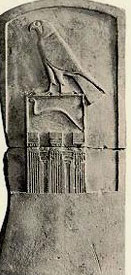
The cartouche is a stylized rope looped and tied around the name of the pharaoh. The ancient Egyptians called it “Shenu”, as it was based on the sign shen (meaning “eternity”) and the verb sheni (“to encircle”), but French scholars named it a “cartouche” (referring to its cartridge-like shape) during the Napoleonic excursion in Egypt, and the name has stuck. Strictly speaking the loop should be round, but it is elongated to accommodate the pharaoh’s name.
Osiris and Isis had their names recorded in this manner during the Greek and Roman periods, but generally only kings names will be found inside a cartouche. During the Eighteenth Dynasty, royal sarcophagi were constructed in the shape of the cartouche and the entire burial chamber of Thutmosis III was shaped like a cartouche.

Bibliography
- Allen, James P. (2010) Middle Egyptian
- Collier, Mark and Manley, Bill (1998) How To Read Egyptian Hieroglyphs
- Wilkinson, Toby A H (1999) Early Dynastic Egypt
Copyright J Hill 2016